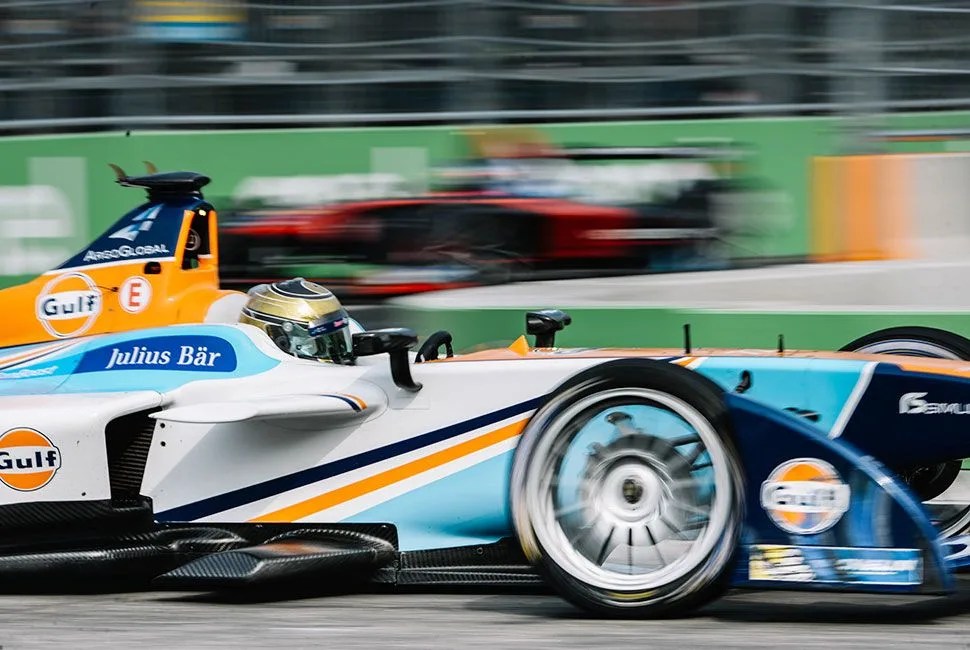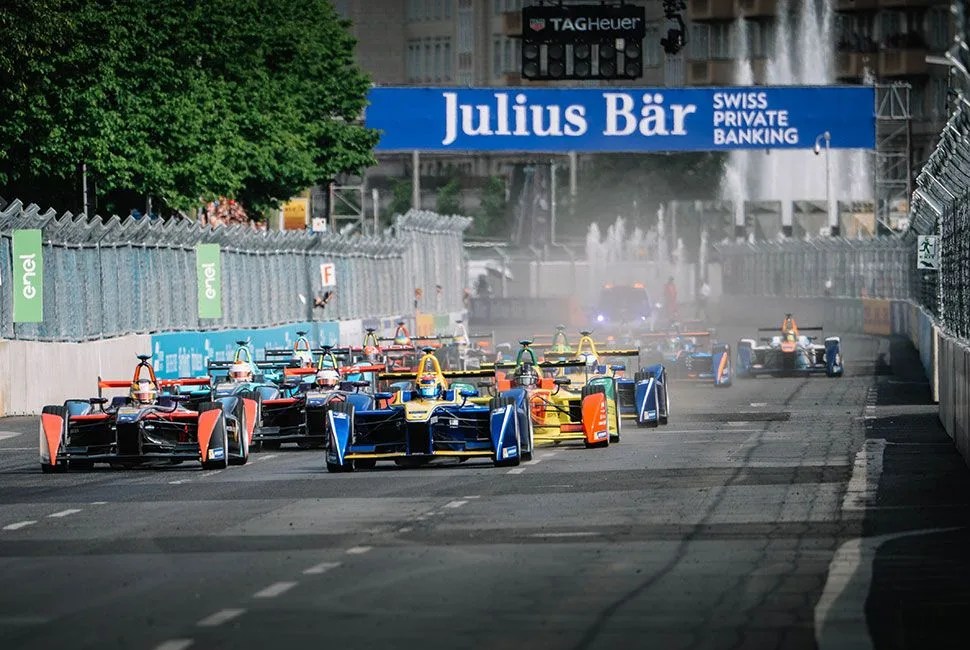4 photos
When the all-electric Formula E race series debuted in late 2014, race-fan reactions zigged and zagged with every quirk of the new league’s format. Electric race cars built to similar chassis specs as modern Formula 1 cars would be crazy cool, but drivers changing cars midway through each race to compensate for limited battery life? Hmmm. Also, the series’s stated premise — a platform for developing electric-vehicle tech — sure sounded important, but is this racing, or R&D?
Add to that the quick one-hour races, the dubious-sounding “Fanboost” system, in which fans vote for which three drivers would receive “100 kilojoules of extra boost power,” and the near-total absence of anything approaching normal race-car-like sound, and Formula E started sounding lackluster.
Then I witnessed a Formula E race in person for the first time, at the May 21 event in Berlin. Standing at the end of the main straight with all the green-vested veteran motorsports photographers, the entire field bore down on me at full e-trot, with some of the top names in racing at the controls. Sébastien Buemi, Nick Heidfeld, Jean-Éric Vergne, Nelson Piquet, Jr. — F1 celebrities, all. The lead cars whipped around the hairpin turn single file with the sort of aggressive force you’d expect from world-class racing, slinging themselves through the turn like silent phantoms. It was a hair-raising moment, with or without brain-melting engines screaming.
But the cars are loud, only in a new way. Their robust-sounding electric motors generate a smooth, almost musical turbine whine and produce 268 horsepower and 170 lb-ft of torque. If that sounds unimpressive compared to the 750-horsepower monsters in today’s F1 cars, it is. But Formula E tracks are all city circuits and generally not as demanding in terms of top speed (the cars are limited to 140 mph), though they benefit from the brisk, torquey acceleration afforded by electric motors. This is also the merely the first version of this kind of racing — the cars will grow steadily faster and more powerful each season.
As the cars spaced themselves out, the action became even more intense — drivers worked each lap to shave milliseconds off of every turn. Over time, as I absorbed the action sans the 18,000 rpm engine, I noticed, for perhaps the first time in decades as a race fan, something new: everything else. I heard every tire squeal. I heard assorted clicks and clacks from the suspension and the stress of cornering, braking, and accelerating. I heard cars bump and grind. I could hear fan reactions. I could hear myself think.
 Eric Adams
Eric Adams



